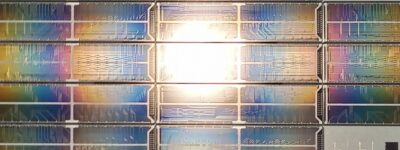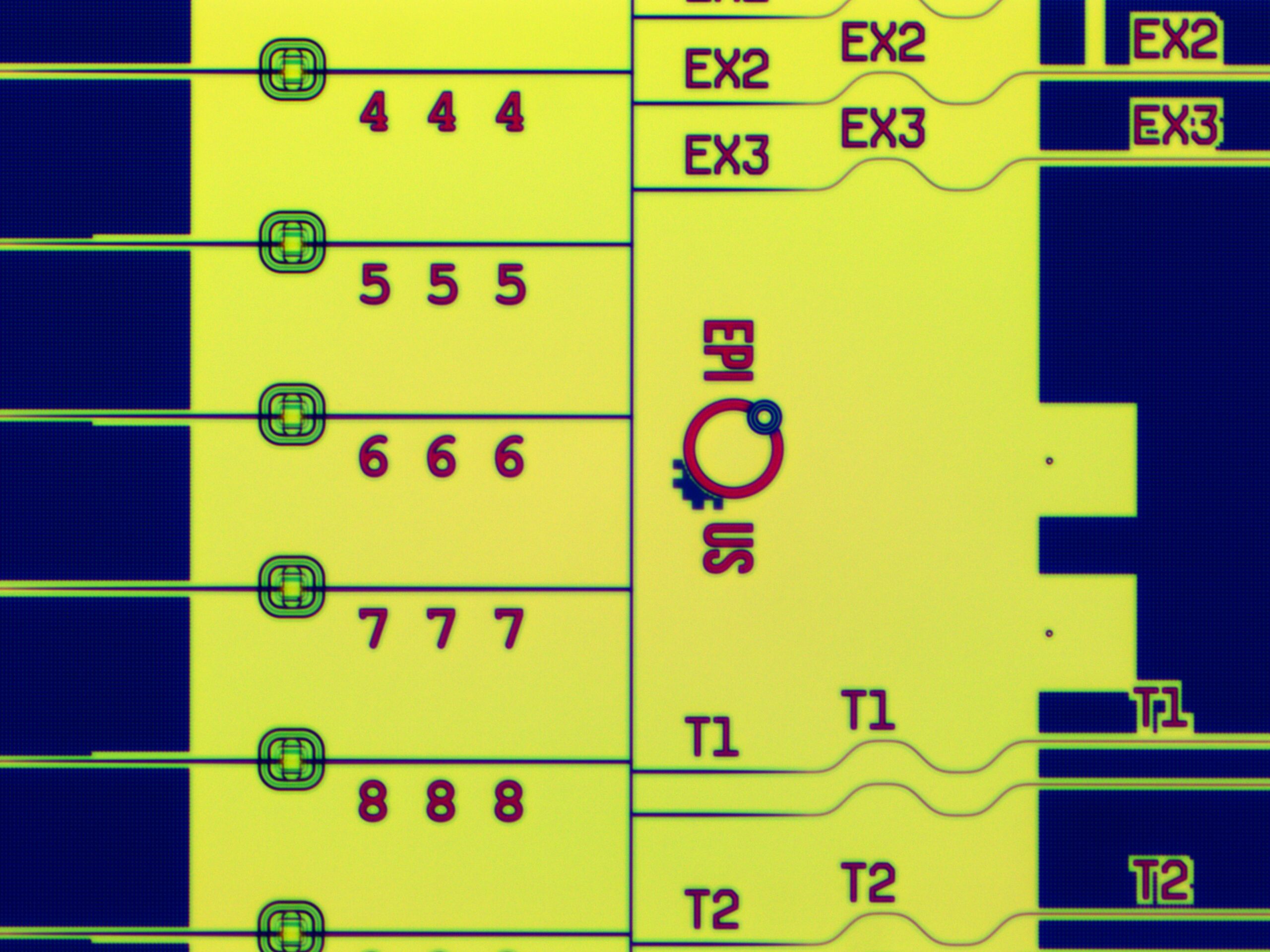Smaller, warmer quantum simulators: pioneering the future of experimentation

Project overview:
Dates: 01 October 2020 – 30 September 2024 | Duration: 48 months
Funding: EU Horizon 2020 – Future Emerging Technologies
Lead: Fondazione Bruno Kessler | Value: €3.26M | No. Partners: 7
To visit the EPIQUS website
The challenge
A cornerstone for the future of experimentation, simulators allow real-world scenarios and conditions to be explored without the associated risks, costs, or time restrictions imposed by the real-world. From transport to medicine, agriculture to finance, many sectors use simulators to approximate and model real-world scenarios; to test ideas, gather information, and refine operations. Integrating the nature and behaviour of matter and energy on atomic and subatomic levels creates a more authentic virtual world in which to run simulations: this can be achieved with quantum mechanics. However, there is presently only one way to access quantum behaviours and it is hampered by the need for complex conditions. The EPIQUS project, funded by the EU Horizon 2020 – Future Emerging Technologies initiative, is creating a lab-accessible, affordable, and performant quantum simulator (QS) operable at room temperature. Such a quantum simulator has the potential to provide many advantages including supporting rapid and widespread innovation.
The approach
EPIQUS has designed and is building an affordable, easy-to-use, reliable QS prototype. The project’s vision to create a QS is being achieved by combining mature silicon microelectronic and silicon nitride quantum micro-photonic functions onto a unique semiconductor platform, to produce a breakthrough device.
3D-integrated QS hardware is being developed, involving a photonic quantum interference circuit monolithically integrated onto a silicon chip with scalable arrays of single photon avalanche detectors (silicon SPADs) operable at ~850 nm at room temperature.
In parallel, a customised integrated system of quantum algorithms that can sustain the quantum simulation hardware results is being built. Combined, an electronic chip will drive the QS module to actively control the quantum optical circuit and collect the output data, which will be used to further feed and refine the software algorithm.

“The first device of its kind to simulate quantum mechanical problems at room temperature, the EPIQUS device may be a cornerstone technology for future quantum simulators.”
The motivation and anticipated impact
It is anticipated that the EPIQUS QS will open the door to future developments in miniaturized and more complex quantum photonic integrated circuits and on-chip detectors of quantum light states. So far, the research has earned the team several high-profile publications including articles in Nature Physics, Nature Communications and Optica.
As for the impact of the technology’s application, it will enable new ideas and quantum functionalities to be tested on a single silicon chip, run remotely by a user from a PC. For industries that use simulations to inform their decision-making processes, the ultimate goal is to be able to use quantum simulators to access more accurate, real-world scenarios that produce better quality information. Similarly, future scientific experiments to understand processes; for example, chemical reactions, the properties of new materials, or biological systems, could be run by a quantum simulator to predict reaction pathways and results.
What’s next…
As the end of the project approaches the achievements of EPIQUS are coming to light, and the team is keen to progress the activity further. The next step is to understand the types of problems the chips can be used to solve; the team has started testing ideas using simulations, and then scaling-down the successful ones transforming the network into a dense, integrated circuit on a single chip, which is then characterised. There is a lot of work to do to explore the range of applications these chips can be used for, and the work has only just begun! The team plans to build on the success of the project creating, experimenting, and characterising the chips, as well as working on the system software to improve its performance.
Most excitingly, the chips provide a means to explore new ideas in the field of quantum science and this novel and promising approach presents the chance for a ground-breaking discovery.
Watch this space… it’s not quantum size, it’s quantum science!
About the Team
The EPIQUS project team possesses a diverse range of expertise, from a wealth of engineering specialisations in material, device, photonic and electronic circuit engineering to microfabrication technology, quantum optics, and information technologies. Together, the partners’ capabilities mean they are able to design, build, trial, and refine the QS without the need for external partners.
The international project team is led by the Fondazione Bruno Kessler (Italy) with partners from the University of Trento (Italy), University of the Basque Country (Spain), University of Vienna (Austria), Rostock University (Germany), Vienna University of Technology (Austria), Electronics and Telecommunications Research Institute (South Korea), LFoundry SRL (Italy), and the Pukong National University Industry-University Cooperation Foundation (South Korea).
Feature Publications
- Ghulinyan, M. (2023). ‘Quantum simulator on a single chip’, EU Research, Winter 2023 vol. (37), pp. 45 – 47.
- M. Bernard, F. Acerbi, G. Paternoster, G. Piccoli, L. Gemma, D. Brunelli, A. Gola, G. Pucker, L. Pancheri, and M. Ghulinyan. Top-down convergence of near-infrared photonics with silicon substrate-integrated electronics. Optica 8, 1363-1364 (2021). https://doi.org/10.1364/OPTICA.441496
- G Piccoli, M Sanna, M Borghi, L Pavesi, M Ghulinyan. Silicon oxynitride platform for linear and nonlinear photonics at NIR wavelengths. Optical Materials Express 12(9), 3551-3562 (2022). https://doi.org/10.1364/OME.463940
- Neef, V., Pinske, J., Klauck, F., Teuber, L., Kremer, M., Ehrhardt, M., Heinrich, M., Scheel, S. and Szameit, A. Three-dimensional non-Abelian quantum holonomy. Nature Physics,19(1), pp.30-34 (2023). https://doi.org/10.1038/s41567-022-01807-5
- Schiansky, P., Kalb, J., Sztatecsny, E., Roehsner, M.C., Guggemos, T., Trenti, A., Bozzio, M. and Walther, P. Demonstration of quantum-digital payments. Nature Communications 14, p. 3849 (2023). https://doi.org/10.1038/s41467-023-39519-w
- Leoze, Nicolò; Azzini, Stefano; Mazzucchi, Sonia; Moretti, Valter; Sanna, Matteo; Borghi, Massimo; Piccoli, Gioele; Bernard, Martino; Ghulinyan, Mher; Pavesi, Lorenzo (2023) Generation of quantum-certified random numbers using on-chip path-entangled single photons from an LED. Photonics Research 11(9), pp. 1484-1499 (2023). https://doi.org/10.1364/PRJ.488875
For further information:
M. Ghulinyan, IQO, FBK – Center for Sensors and Devices | T: +39 0461314676 | E: [email protected]
This case study was developed by Mher Ghulinyan and the Fondazione Bruno Kessler – Center for Sensors and Devices in 2024 as part of an overarching review of the Center’s research impact.